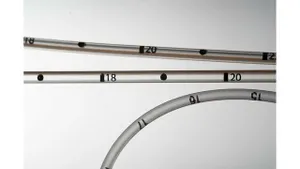Avantium on track for 2016 launch of innovative PEF bottles
Avantium’s announcement several weeks ago that it had entered into a joint development agreement with ALPLA for the development of PEF bottles signaled that the company’s strategy of moving forward in partnership with the industry remains a guiding principle. PlasticsToday talked to Nathan Kemeling, director business development at Avantium, about the company’s countdown to 2016, when the first PEF bottles are targeted to reach the market.
July 11, 2013
PEF (polyethylene furanoate) is the next-generation biobased, recyclable polyester developed by Avantium on the basis of furanics technology. Kemeling: “In the transition to biobased materials, we think PEF holds the best cards to become the next commodity material for packaging applications.”
And Austrian blowmolding specialist ALPLA, or ALPLA Werke Alwin Lehner GmbH to give the company its full name, is the leading manufacturer of packaging solutions in Western Europe. “According to ALPLA, everyone encounters an ALPLA product at least once a day,” said Kemeling. “It therefore made perfect sense to partner with them to develop the supply chain for PEF, as they already supply to all the major brand owners.”
Even more important, however, was ALPLA’s proven track record in developing innovative technology. “They have very extensive knowledge in the area of PET conversion and the research facilities for developing and optimizing the new PEF bottle,” said Kemeling. “Although there’s no need to invest in new machines: PEF can be processed on the same equipment as PET. Obviously, some tuning is required, as the processing window is slightly different, but otherwise, converting PEF is very similar to PET.”
ALPLA will not only be producing PEF bottles for cosmetics, food and personal care products, but will also collaborate with Avantium on developing PEF packaging for the beer and alcoholic beverage sectors. “We think that the superior barrier properties of PEF—PEF offers a ten-times better barrier to oxygen than PET, four-times better CO2 and a twice-better barrier to water—could prove a significant advantage in this area,” noted Kemeling.
According to ALPLA, sustainability is a “key driver for growth,” which is among the reasons the company is eager to collaborate with Avantium on bringing 100% biobased PEF bottles to the market by 2016.
“For us, however, functionality is more important than being green,” Kemeling explained. “We’re not especially capitalizing on the fact that our material is biobased; our point is that it is the better choice, because of the advantage it offers in terms of material properties, cost efficiency, and cost competitiveness. After all, you have to look at the value chain as a whole in order to understand what the most sustainable route is. Merely being biobased does not guarantee that a material is the most sustainable choice. Other aspects must also be factored in.”
ALPLA is the third company, after Coca-Cola and Danone, to partner with Avantium on the development of PEF bottles. “When introducing a new material of any kind—not only a new polyester—you’re up against an established industry that needs to be convinced of its added value. Our strategy is to partner with key players, as a way to enhance acceptance. We have to work with the entire chain—resin manufacturers, feedstock suppliers, you name it—and get them to understand the advantages of our product,” explained Kemeling. He added: “We’ve been lucky: We have created a pool of end users who want to use our product. That considerably lowers the risk for other members of the value chain.”
It’s a strategy that is also being applied in other application areas. “We are looking at other applications for PEF besides bottles,” said Kemeling. “We are partnering with companies to develop PEF film and sheet, for packaging applications, and are also in the very early stages of talks with partners to develop fibers, as well. PEF fibers could well be used in, for example, carpeting, automobile interiors and non-woven applications. However, this is still all very preliminary. We hope to be able to announce a new partnership in this area in January 2014.”
Avantium’s main goal, for now, is a coordinated launch by all partners of the new PEF bottles in 2016. To that end, a new plant will be built with a capacity of 50,000 metric tons, in order to ensure a steady supply of PEF. Kemeling: “We’re still considering locations. On the one hand, Europe offers the advantage that all our knowhow and management is over here. Economic factors, however, such as cheaper energy, feedstock availability and various incentives, could turn the scale in favor of North America.”
In line with its strategy of collaboration, Avantium is negotiating with a number of strategic companies about a partnership on building the plant. “A plant of that size requires a very substantial investment—around €150 million,” said Kemeling. “Finding partners to help with the scale-up and industrialization is a way to share the burden. Obviously, we are looking closely at other alternatives, as well. We are keeping all options open.”
About the Author(s)
You May Also Like


